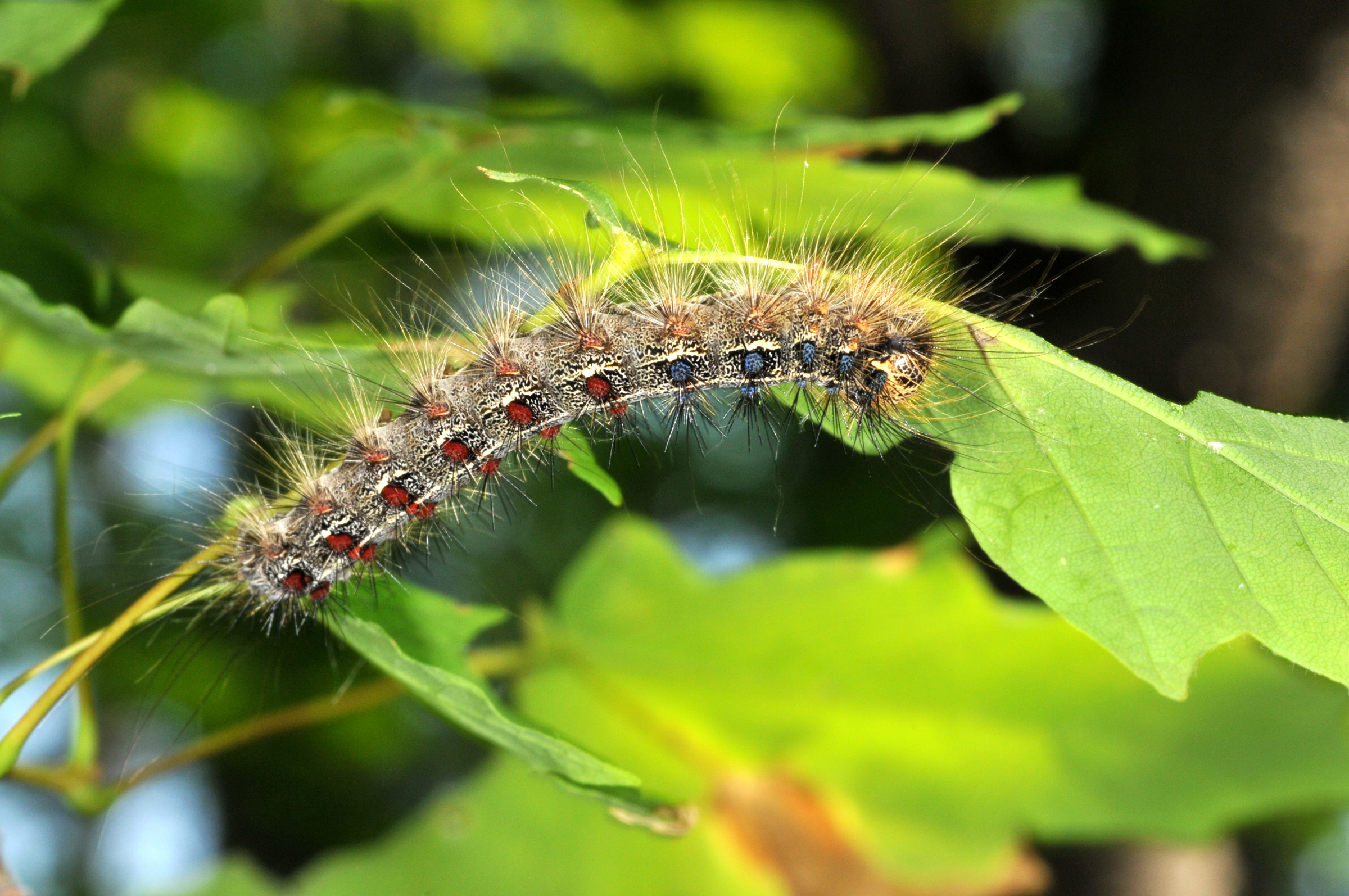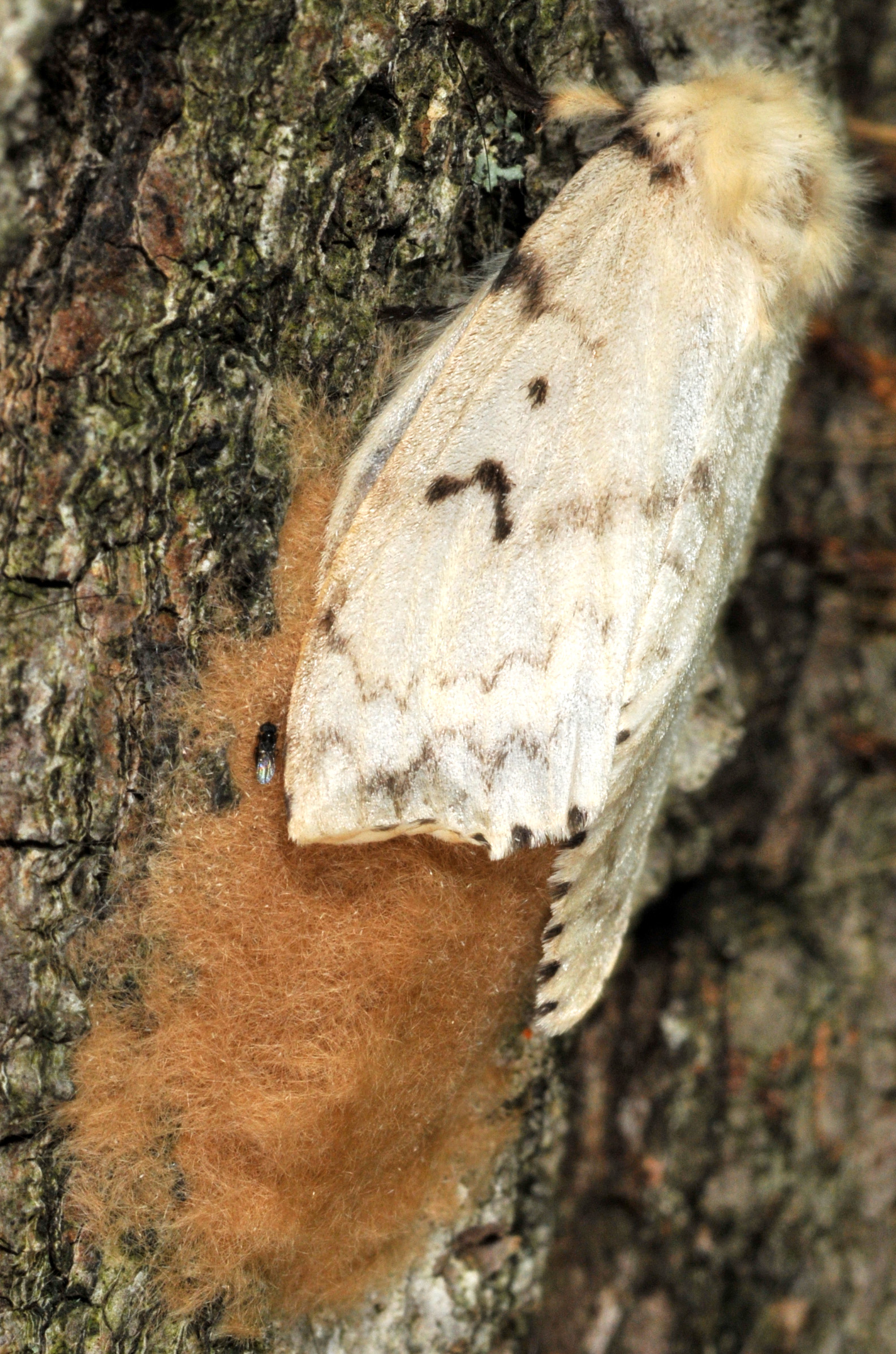SPONGY MOTH
SPONGY moth Q & A's FOR CHRISTMAS TREE GROWERS & NURSERY PRODUCERS
Cliff Sadof, Department of Entomology, Purdue University; Phil Marshall, State Forest Health Specialist and Megan Abraham, State Entomologist, Indiana Department of Natural Resources
If you want to view as pdf, click here
Q: I live in a county that is quarantined for spongy moth (formerly gypsy moth). Can I ship trees to uninfested counties?
A: Not unless you get your crop inspected and certified as being free of all viable spongy moth life stages from either an Indiana Department of Natural Resources representative or some other plant health regulatory official. Passing that inspection certifies your crop as free of spongy moth.
Q: What can I do to be sure that my crops will be inspected in a timely manner so I can have the best chances for shipping?
A: You should contact Megan Abraham at the Indiana Department of Natural Resources (IDNR) (317-232-4120) to obtain and sign a Compliance Agreement (CA). IDNR will also help you assess the spongy moth threat on your farm.
Q: What is a Compliance Agreement?
A: A Compliance Agreement is a legal document containing the following stipulations. 1) You will only ship regulated articles that are free of viable spongy moth life stages. 2) Regulated articles will be inspected annually and treated when viable stages are present in accordance with accepted procedures. 3) United States Department of Agriculture - Plant Protection and Quarantine (USDA-APHIS-PPQ) will furnish inspectors, when available. 4) You will use official certificates and labels to certify that the crop is free of spongy moth. 5) You will use labels only on spongy-moth-free crops. Contact Megan Abraham at IDNR (317-232-4120) or your local nursery inspector to order labels. Note: Failure to comply with the Compliance Agreement or spongy moth regulations may result in civil penalty.
Q: What does the inspector do when he or she visits my property?
A: Your fields will be inspected to determine whether live spongy moths are close enough to allow them to enter your crop. Spongy moths are likely to be shipped on your crops if the inspector finds one of the following:
1) One or more egg masses on the regulated articles or within 10 feet of the articles. 2) Five or more egg masses per acre within 100 feet of the article. 3) Heavy larval infestations within one mile of the production area, which could result in infestation through blow in or larval migration into the site.
Q: Can I ship trees after the inspector finds Spongy moth?
A: It depends on when they find it. When spongy moths are in the caterpillar stage they can be killed on your crop with approved insecticide sprays. When moths are in the egg stage, each tree to be shipped must be inspected. When egg masses are found they should be removed or treated with a smothering agent called “Golden Natural Oil.” Although methyl bromide treatments are approved to kill spongy moths on trees, this process is not acceptable because it will ruin your crop.
Spongy moth caterpillar feeding. (Photo Credit: John Obermeyer)
Q: How do I treat fields infested with spongy moths?
A: Nursery producers and Christmas tree growers need to apply one of the approved insecticides in accordance with label directions. Apply these insecticides on the trees when caterpillars are 1/2 to 1 inch long (about May 10) and again when they are about 1 to 2 inches long (about May 25). The first spray kills caterpillars that are blown in. The second spray kills larger caterpillars that are wandering into the field. In fields near areas that have recently been defoliated, growers should spray an additional application of Dimilin (diflubenzuron) in late April.
If at all possible, both Christmas tree growers and nursery producers need to apply diflubenzuron or Bacillus thuringiensis to adjacent woodlots if they are infested with spongy moth. This will kill young caterpillars that can move into the crop during the month of May.
Insecticides that are labeled for control (not suppression) of gypsy moth can be used to kill spongy moth larvae. Contact Megan Abraham or your local nursery inspector to be sure the insecticide you apply for spongy moth is acceptable. The USDA APHIS Spongy Moth Program Manual lists the following insecticides as among those that are acceptable. Acephate (Orthene); carbaryl (Sevin); diflubenzuron (Dimilin); phosmet (Imidan); Spinosad (Conserve); and tebufenozide (Confirm).
Note: Dimilin is the most effective of the six materials and has a low impact on non-target species and beneficial insects that help control other pests. This product is recommended for nurseries and Christmas tree plantations with integrated pest management programs.
Q: What should I do if my county is quarantined in July after spongy moth is beyond the caterpillar stage?
A: You still need to contact Megan Abraham at IDNR (317-232-4120) to sign up for the Compliance Agreement. At this time inspectors will visit to determine if there are enough spongy moth in your area to prevent shipment. Since the spongy moth populations are generally low in newly quarantined counties, it is unlikely that there will be enough moths in your area to cause a problem.
However, if your field is near a site that had enough spongy moth to qualify for aerial treatment in the spring, the spongy moths may be near enough to your fields to restrict shipment. The only way you will know is to have your area inspected. The best way to do this is by signing a Compliance Agreement.
TO REPORT SPONGY MOTH
- Download and use the Great Lakes Early Detection Network App for Android or iPhone.
- Contact the Indiana DNR at 866-NO-EXOTIC.
FOR MORE SPONGY MOTH INFORMATION
- Visit Purdue Extension Entomology's Spongy Moth Information Web Site to download free GM series bulletins and get the latest information.
- Order the GM series bulletins at your Purdue County Extension office.
- Contact the Department of Entomology, Purdue University, W. Lafayette, IN, 47907-1158, 765-494-4554, or Indiana Department of Natural Resources at 317-232-4120.
Spongy moth adult with egg mass. (Photo Credit: John Obermeyer)
READ AND FOLLOW ALL LABEL INSTRUCTIONS. THIS INCLUDES DIRECTIONS FOR USE, PRECAUTIONARY STATEMENTS (HAZARDS TO HUMANS, DOMESTIC ANIMALS, AND ENDANGERED SPECIES), ENVIRONMENTAL HAZARDS, RATES OF APPLICATION, NUMBER OF APPLICATIONS, REENTRY INTERVALS, HARVEST RESTRICTIONS, STORAGE AND DISPOSAL, AND ANY SPECIFIC WARNINGS AND/OR PRECAUTIONS FOR SAFE HANDLING OF THE PESTICIDE.
April 2022

It is the policy of the Purdue University Cooperative Extension Service that all persons have equal opportunity and access to its educational programs, services, activities, and facilities without regard to race, religion, color, sex, age, national origin or ancestry, marital status, parental status, sexual orientation, disability or status as a veteran. Purdue University is an Affirmative Action institution. This material may be available in alternative formats.
This work is supported in part by Extension Implementation Grant 2021-70006-35390/ IND90001518G-1027053 from the USDA National Institute of Food and Agriculture.
765-494-8491
www.extension.purdue.edu
Order or download materials from https://edustore.purdue.edu/




